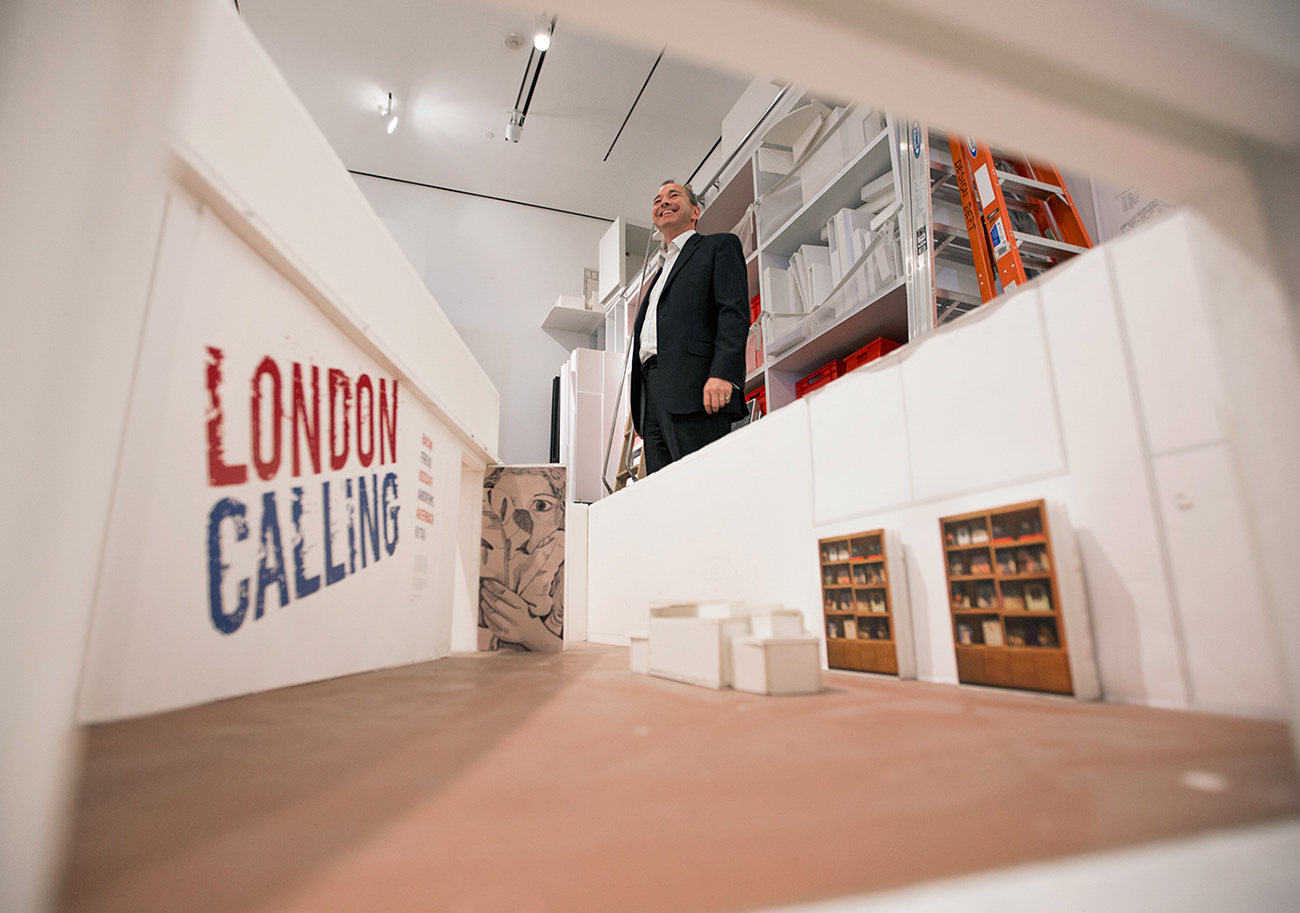For the last six months I’ve been living in a doll’s house. Not literally of course, but it certainly has sometimes felt like it.
As we’ve been planning the exhibition London Calling, we’ve been making use of a scale model in our Design Department that lets us arrange temporary walls in the galleries and plan the distribution of the artworks. It’s made of lightweight foam-core, and the designers have mocked up scaled model pieces of the pictures, graphics, and gallery benches. I feel like a giant striding across the spaces—in fact, when a foot accidentally brings a wall crashing down or some such, our head of design calls it “giant damage.”
The exhibition shows the work of six of the principal artists of the so-called School of London: Francis Bacon, Lucian Freud, Leon Kossoff, Michael Andrews, Frank Auerbach, and R. B. Kitaj. The model has been invaluable in working out who goes where, and in seeing how the pictures will fit and look best in the galleries. The model also enables us to make digital floor plans we can share with our colleagues at Tate in London for their input too. The exhibition is a collaboration with Tate, which has the best collection of this material: 80 percent of the works come from them, with key supplements from other public and private collections.

Elie dives into the foam-core mock-up to make adjustments, as Tristan (center) and I look on
One of the key considerations is that we want to allow visitors to see as many of the artworks as possible by daylight—the galleries have ceiling louvers that can be open or closed—but we need to keep light-sensitive works on paper (drawings, prints, pastels) out of the daylight. It also turns out that some of the Francis Bacon works have bare exposed canvas that is light sensitive.
Most of the walls rendered in the model are structural and can’t be moved, but within the two principal spaces in our upstairs Exhibitions Pavilion (which we call the “cube” and the “rectangle”) we can distribute a selection of temporary walls of varying heights and widths. The two spaces are linked by the room known as the “oculus,” which is where we’ve put the works on paper. We haven’t taken account of the wall colors in the model (though I guess one could); in the exhibition the spaces will be two shades of gray and the oculus a beautiful dark blue.
I know that my four-year-old would have a lot of fun in the model, although our visitors might scratch their heads at some of the resulting displays. Come to think of it, maybe we should put a version of it in our Family Room.
We begin installing the exhibition this week, and from experience I know that there are always surprises when we see the real objects in the real spaces; adjustments will have to be made. I can’t wait to begin!

London Calling: Bacon, Freud, Kossoff, Andrews, Auerbach, and Kitaj is on view at the Getty Center from July 26 to November 13, 2016. Admission is free. The accompanying book is available via the Getty Store.





Hi Julian, thanks for a great article! Just curious what Getty Museum’s hanging method is? Screws in drywall or.. ? Thanks!
Hi Jesse, Thanks for your interest and your question. I’m afraid this will be an unsatisfying answer, but our methods vary greatly depending on the weight/size/location of the painting/drawing/print. In the case of temporary exhibitions with borrowed objects, we also often have to take account of preferences expressed by the owner of the work too. Thanks again for reading and commenting. Julian
Such a great thing to see! Good luck with the installation!
Seeing how this exhibit model was constructed and put to use was extraordinarily entertaining for my three kids! Well done. Seeing behind the curtain to art-exhibition-as-endeavor was truly illuminating.